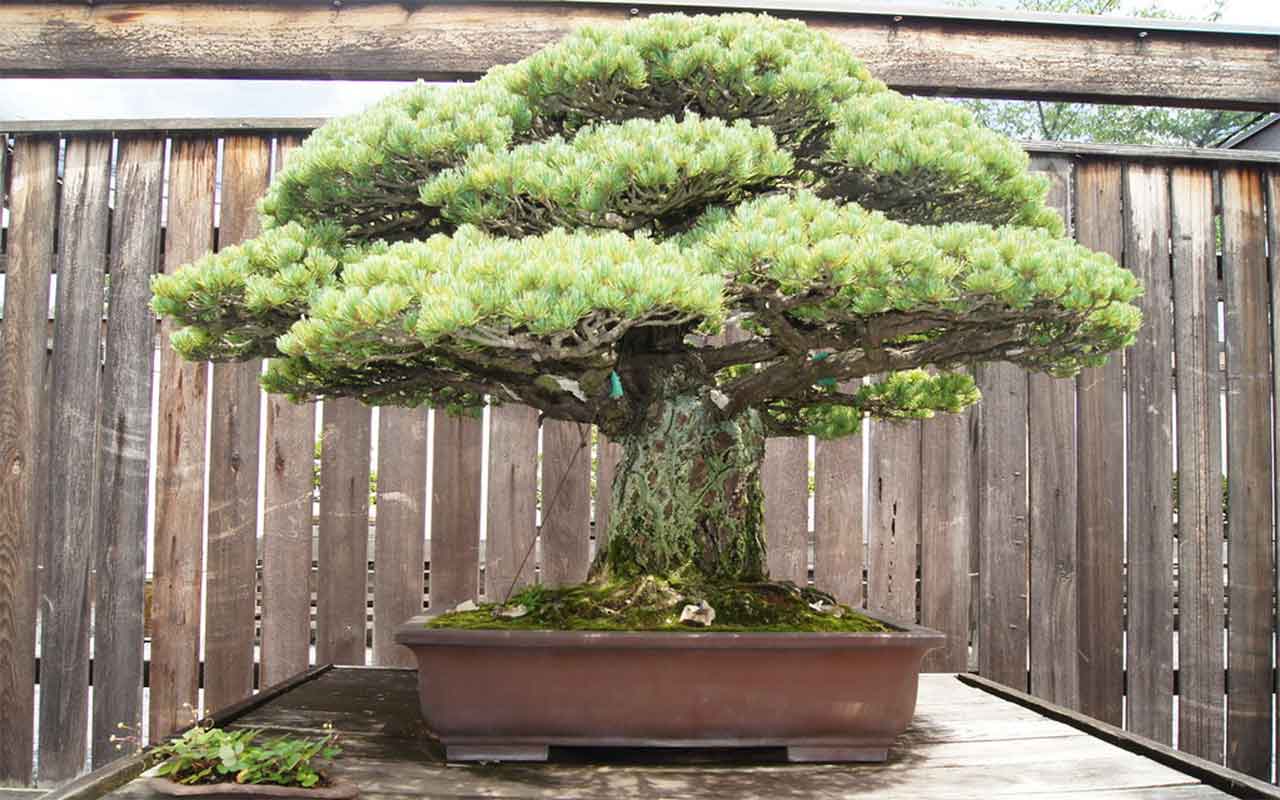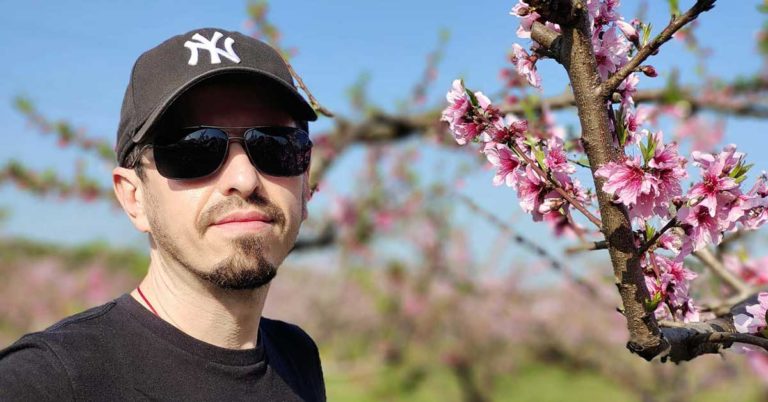The bonsai artist gives birth to the bonsai. He passes it on to his son who sees him grow up, then to his grandson who sees him age.
How long do bonsai trees live? Well The lifespan of a bonsai tree varies depending on the species and care provided.
With proper maintenance, a healthy bonsai tree can live for several decades, sometimes even hundreds of years, passed down from generation to generation . Some species, like the Ficus or Juniper, have been known to thrive for up to 100 years.
Through the bonsai, the family’s legacy lives on, transcending time and generations.
Key Factors That Determine How Long Bonsai Trees Live
Just a reminder how the lifespan of a bonsai tree is influenced by several factors.
A crucial one is of course the care and maintenance provided by the owner.
Regular watering, proper fertilization, and adequate sunlight are essential for the health and longevity of a bonsai tree.
Additionally, the type of species plays a role in determining its lifespan.
Some species may live for several decades, while others have a shorter lifespan. The environment in which the tree is kept also affects its lifespan.
Other factors such as temperature, humidity, and air quality can impact the tree’s health.
Lastly, diseases and pests pose a threat to the lifespan of a bonsai tree and should be promptly addressed to ensure its longevity.
See also
Average Lifespan of Different Bonsai Tree Species
The average lifespan of bonsai trees can vary depending on the species.
Some species have a relatively short lifespan of only 10-15 years, while others can live for… centuries.
Here is a list of the most popular bonsai tree species and their lifespan:
- Juniper: up to 100 years
- Japanese maple: 20-30 years
- Pine trees: 60-80 years.
These estimates are based on the tree’s natural lifespan in the wild. With proper care, bonsai trees can often live longer than their natural counterparts.
Common Mistakes that Can Shorten the Lifespan of Bonsai Trees
One of the most common mistakes is overwatering. Bonsai trees have shallow root systems, and too much water can lead to root rot and ultimately kill the tree.
Another mistake is inadequate lighting. Bonsai trees, like all plants, need sunlight to photosynthesize and thrive. Placing them in a location with insufficient light will weaken the tree and prevent it from growing properly.
Additionally, improper pruning can also harm bonsai trees. Pruning is necessary to maintain their miniature size and desired shape, but cutting too much or at the wrong time can cause stress and damage the tree.
Lastly, neglecting to fertilize bonsai trees is also a common mistake. Fertilizing provides the necessary nutrients for growth and overall health.
How to Determine the Age of a Bonsai Tree
That’s a tough one. Determininghe age of a bonsai tree can be a challenging task, as the small size and unique features of these miniature trees can make it difficult to estimate their actual age.
Here are a few tips that can help in determining the age of a bonsai tree:
- Multiply the diameter by the growth rate: measure the diameter of the tree trunk at its base. Then, find the growth rate for the specific bonsai species. Multiply the diameter by the growth rate to get a rough estimate of the tree’s age.
- Count the growth rings: This method is more accurate but may damage the tree. Prune a small branch from the tree and carefully count the number of rings on the cut surface. Each ring represents one year of growth. However, this technique is not recommended for living bonsai trees, as it can compromise their health.
- Observe the branching patterns, bark texture, and overall shape: For deciduous bonsai trees, such as the Japanese Maple, the age can be estimated by observing their branching patterns, bark texture, and overall shape. These trees shed their leaves in the fall, and their age can be determined by the development of their branches and trunk.
- Consider the tree’s history: If you bought the bonsai tree from a reputable source, they may be able to provide information about its age. However, keep in mind that this information may not always be accurate, as bonsai trees can be styled to look older than they actually are.
- Consult an expert: If you’re unsure about the age of your bonsai tree, consider consulting a bonsai specialist or an experienced bonsai enthusiast. They may be able to provide valuable insights based on their knowledge and experience.
Bonsai Tree Lifespan: Myths vs. Reality
There are many myths and misconceptions about the lifespan of bonsai trees, and it is important to separate fact from fiction.
One common myth is that bonsai trees have a significantly shorter lifespan compared to their full-sized counterparts. In reality, bonsai trees can live just as long as their naturally grown counterparts.
Bonsai trees are not a separate species; they have the potential to live just as long as any other tree of the same species.
Another myth is that bonsai trees can only survive indoors. Weel, bonsai trees are all outdoor trees. Only a few tropical species can thrive indoor.
Bonsai Tree Diseases and Their Impact on how long they live
Various diseases can affect bonsai trees, including fungal, bacterial, and viral infections.
Fungal diseases, such as root rot, powdery mildew, and black spot, are common in bonsai trees and can lead to decay and death if left untreated.
Bacterial infections, like bacterial leaf spots and cankers, can cause defoliation and weaken the overall health of the tree.
Viral infections, although less common, can also have a devastating effect on bonsai trees by causing leaf deformation, stunted growth, and ultimately death.
Watering and Fertilizing Bonsai Trees: Balancing Necessities for Longevity
Finding the right balance when watering or fertilizing can be a bit tricky.
Bonsai trees have very specific watering needs. They require moist soil but should not be left sitting in water for extended periods of time. You definitely need to water your bonsai tree thoroughly. Overwatering or underwatering can both be detrimental to the tree’s health.
Also, bonsai trees need a steady supply of nutrients to thrive, and regular fertilizing helps provide these nutrients. Applying too much fertilizer can burn the roots and damage the tree, while too little may result in stunted growth.
See also
Climate Considerations and Bonsai Tree Lifespan
Temperature, humidity, sunlight, and seasonal changes greatly influence the overall health and longevity of bonsais.
Bonsai trees thrive in specific climate conditions, with many species requiring a cool, temperate climate. Extreme temperatures can be detrimental to their growth, causing stress and even death.
Similarly, bonsai trees need a balanced level of humidity to prevent leaf drying and root rot. Adequate sunlight is also vital for their photosynthesis process and overall vitality.
Of course different species of bonsai trees have different climate preferences, with some being more tolerant to heat or cold than others. Better to pick weel your tree…
Climate is the main factor to consider when buying a bonsai.
Famous Historical Bonsai Trees: Their Lifespan and Legacy
In history, some bonsai trees have gained fame and are considered historical treasures due to their longevity.
One famous historical bonsai tree is the Yamaki Pine (cover photo), which survived the atomic bombing of Hiroshima in 1945. The Yamaki Pine is estimated to be around 400 years old and has since become a symbol of resilience and hope.
Another renowned bonsai tree is the Ficus retusa from the Qing Dynasty, known as the « Barack Obama » bonsai tree. This tree was given as a gift to President Barack Obama and now resides in the National Bonsai & Penjing Museum in Washington, D.C. It carries a strong legacy as a symbol of friendship between the United States and China.
Additionally, the Masashi Hirao White Pine bonsai tree, created by the famous bonsai master Masashi Hirao in the early 1800s, showcases incredible craftsmanship and expertise.
This bonsai tree has been passed down through generations and is now displayed in the Omiya Bonsai Art Museum in Japan.


